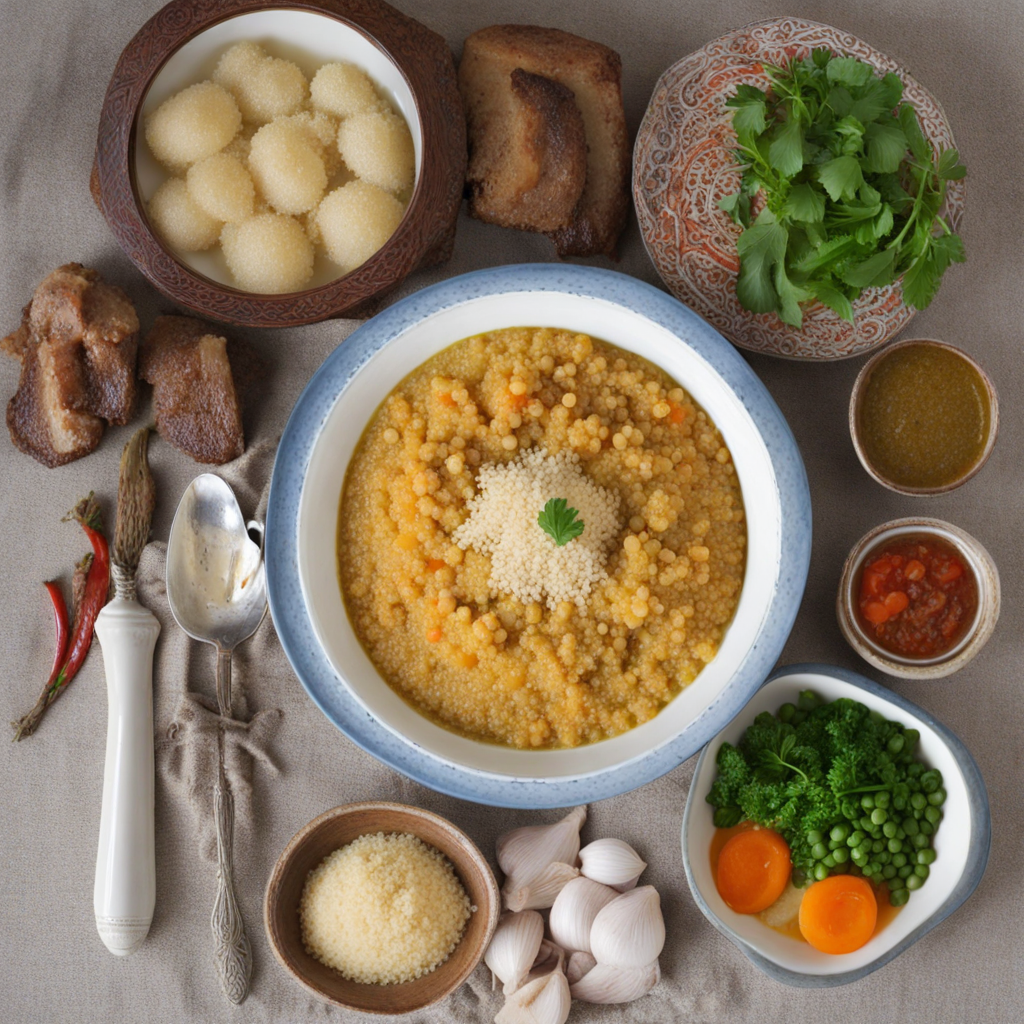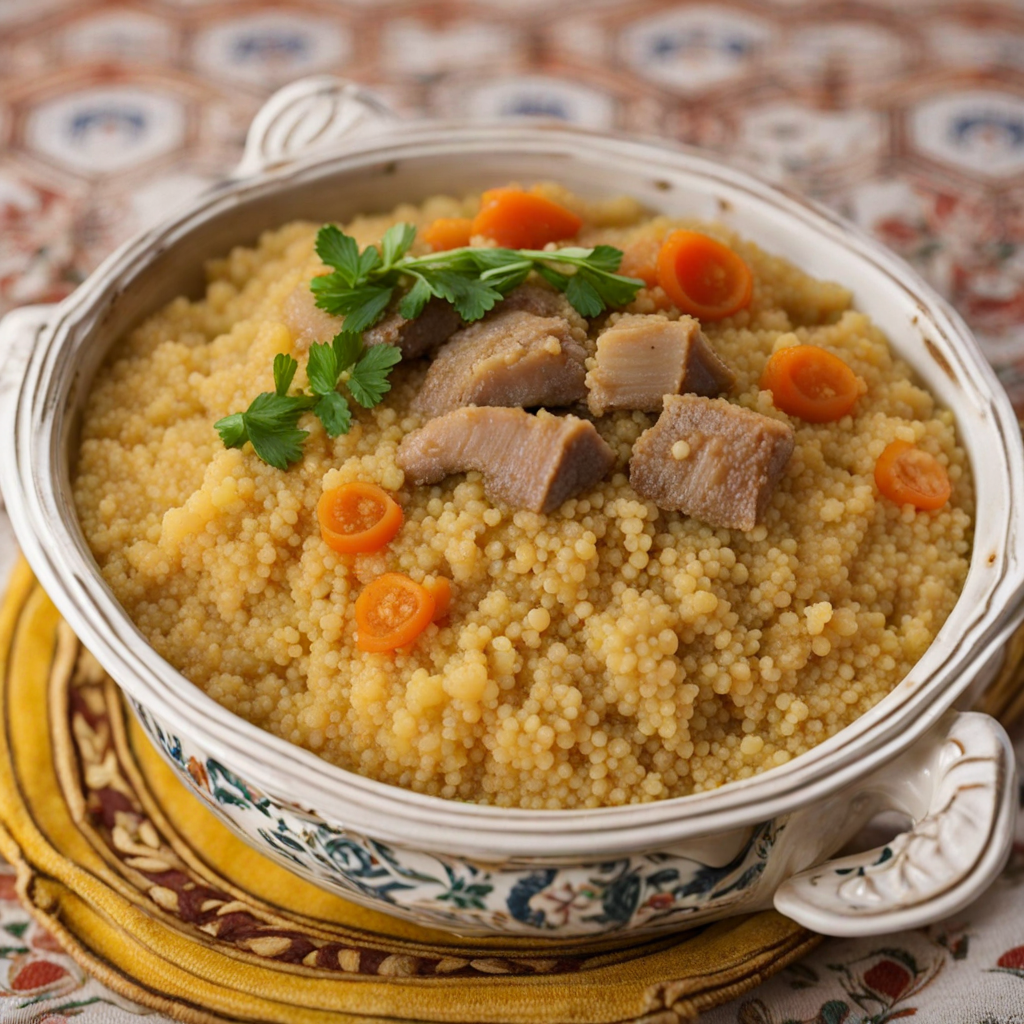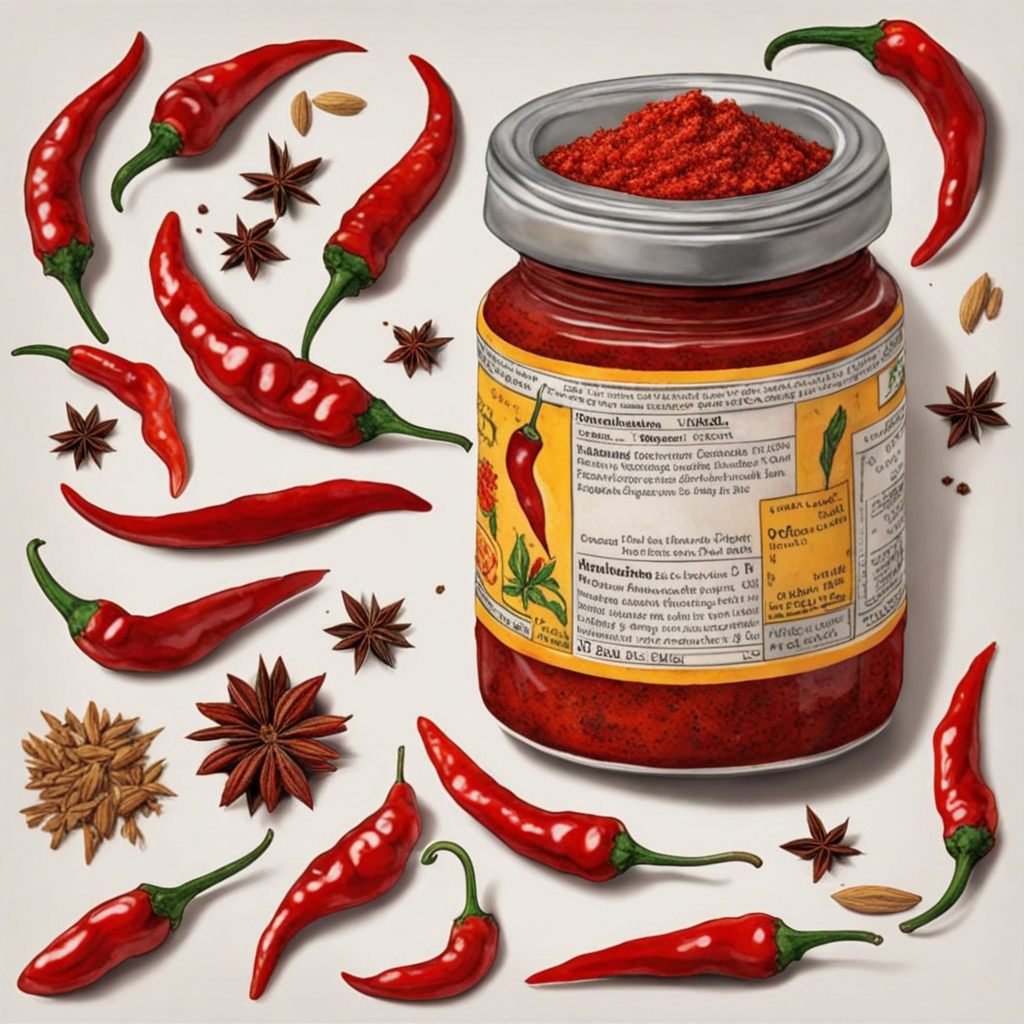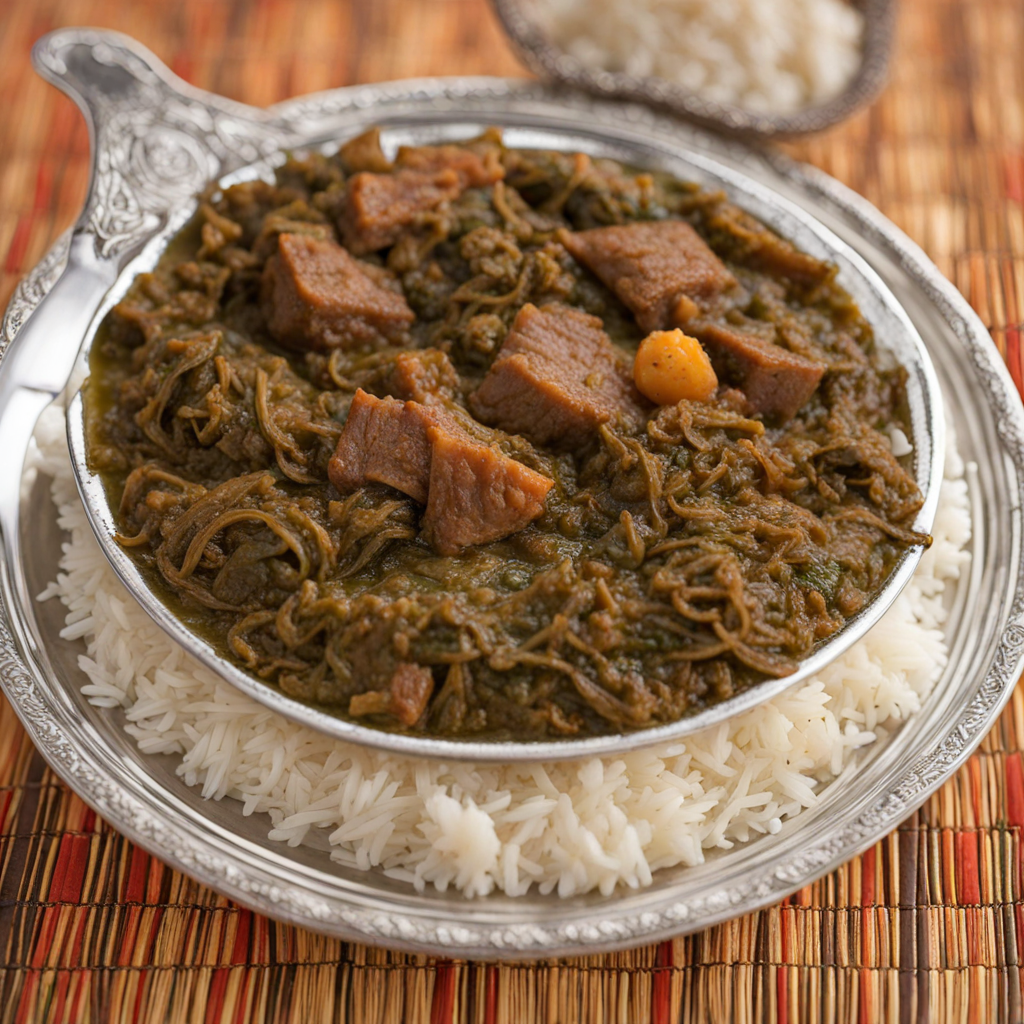Couscous
Couscous, a staple dish hailing from the vibrant kitchens of Tunisia, offers a delightful culinary experience that is both comforting and complex. This traditional North African dish consists of tiny steamed granules made from semolina wheat, which provide a light and fluffy texture. The grains are often paired with a rich and aromatic sauce, typically made from a medley of vegetables, chickpeas, and tender pieces of meat such as lamb, chicken, or fish. The flavors are further enhanced with an array of spices, including cumin, coriander, and harissa, a fiery chili paste that adds a distinctive kick to the dish. The preparation of couscous is an art in itself, often involving a traditional steaming process in a special pot called a couscoussier. This method allows the grains to absorb the flavors of the sauce while maintaining their unique texture. In Tunisia, couscous is not merely a meal; it is a communal experience, often served in a large shared dish, inviting family and friends to gather around and enjoy the feast together. Each bite is a celebration of local produce and spices, showcasing the rich agricultural heritage of the region. Tunisian couscous is versatile and can be customized according to seasonal ingredients and personal preferences. Vegetables like zucchini, carrots, and bell peppers become beautifully tender and infused with the savory broth, creating a colorful and nutritious accompaniment to the grains. Whether enjoyed as a hearty main course or a fragrant side dish, couscous embodies the warmth of Tunisian hospitality and the vibrant flavors of its culture, making it a must-try for any adventurous food lover.
How It Became This Dish
The History of Couscous (كسكسي) from Tunisia Couscous (كسكسي) is more than just a staple dish; it is a culinary icon that embodies the rich cultural tapestry of Tunisia and the Maghreb region. Its origins, cultural significance, and evolution over time tell a story of resilience, adaptation, and the intricate interplay of various societies that have shaped North Africa. #### Origins of Couscous The roots of couscous can be traced back to ancient Berber tribes of North Africa, specifically in what is now Algeria and Tunisia. While the exact origins are shrouded in time, historical accounts suggest that couscous was consumed as early as the 13th century. The preparation of couscous involves steaming semolina wheat granules, which are then served with a variety of accompaniments, typically a stew of meat and vegetables. The earliest mention of couscous in written records is attributed to the 9th-century Arab historian Ibn Khaldun, who described it as a traditional food of the Berber people. The Berbers, known for their pastoral lifestyle, would have utilized local grains, particularly durum wheat, making couscous a practical and nutritious meal. #### Cultural Significance Couscous is more than just a food; it is a symbol of identity and community in Tunisia. The dish is deeply embedded in the cultural practices and rituals of the Tunisian people. It is often the centerpiece of family gatherings, celebrations, and religious occasions. The preparation of couscous is typically a communal activity, involving family members working together to create the dish, which fosters a sense of belonging and unity. In Tunisian culture, couscous is often served during significant events such as weddings, religious holidays, and family feasts. On Fridays, it is customary for families to gather for a communal couscous meal, which emphasizes the importance of family ties and social connections. The dish is also associated with hospitality; offering couscous to guests is a mark of generosity and respect. #### Ingredients and Variations The beauty of couscous lies in its versatility. Traditionally, couscous is made from steamed semolina flour, but it can also be prepared from barley or millet, depending on regional variations. The most common accompaniments include lamb, chicken, or fish, paired with an array of vegetables such as carrots, zucchini, and chickpeas. Spices like cumin, coriander, and harissa add depth and flavor to the dish, showcasing the rich spice heritage of Tunisia. Couscous can be served in different styles, such as "couscous with seven vegetables," which features a variety of seasonal vegetables, or "couscous with lamb," where the meat is slow-cooked to enhance its tenderness. Each variation tells a story of the local ingredients and culinary traditions, allowing for creativity and personal expression in its preparation. #### Historical Development As Tunisia became a crossroads of civilizations, couscous evolved, incorporating influences from various cultures. The arrival of the Arab conquerors in the 7th century introduced new spices and cooking techniques, further enriching the dish. The Ottoman Empire's presence in North Africa during the 16th century also played a significant role in shaping Tunisian cuisine, leading to a fusion of flavors and ingredients. During the French colonial period in the 19th and early 20th centuries, couscous underwent further transformation. French culinary techniques were introduced, resulting in new methods of preparation and presentation. Despite this foreign influence, couscous remained a steadfast symbol of Tunisian identity and resistance. In recent decades, couscous has gained international recognition, transcending its regional roots. As Tunisia began to embrace its culinary heritage, couscous became a signature dish that showcased the country's rich history and diverse culture. It is now enjoyed worldwide, often served in restaurants and homes outside Tunisia, where it has been adapted to suit local tastes while retaining its core essence. #### Couscous in Modern Tunisia Today, couscous continues to be an integral part of Tunisian cuisine and culture. The dish has transcended its humble origins to become a source of national pride. In 2016, UNESCO recognized the practice of preparing and sharing couscous as an Intangible Cultural Heritage of Humanity, further solidifying its place in the global culinary landscape. Modern Tunisian cuisine has embraced innovation while respecting traditional methods. Chefs now experiment with new ingredients, techniques, and presentations, often combining couscous with international flavors and modern cooking styles. However, the essence of couscous remains deeply rooted in its historical significance and the communal spirit that surrounds its preparation and consumption. #### Conclusion Couscous is a dish that transcends mere sustenance; it is a reflection of Tunisia's history, culture, and identity. From its ancient Berber roots to its current status as a global culinary icon, couscous tells a story of adaptation, resilience, and community. It serves as a reminder of the interconnectedness of cultures and the importance of preserving culinary heritage. As Tunisia continues to navigate the complexities of modernity, couscous remains a beloved symbol of national pride, a bridge between the past and the present, and a celebration of the shared human experience. Whether enjoyed in a bustling market or a quiet family home, couscous embodies the heart and soul of Tunisian cuisine, inviting all to partake in its rich legacy.
You may like
Discover local flavors from Tunisia







